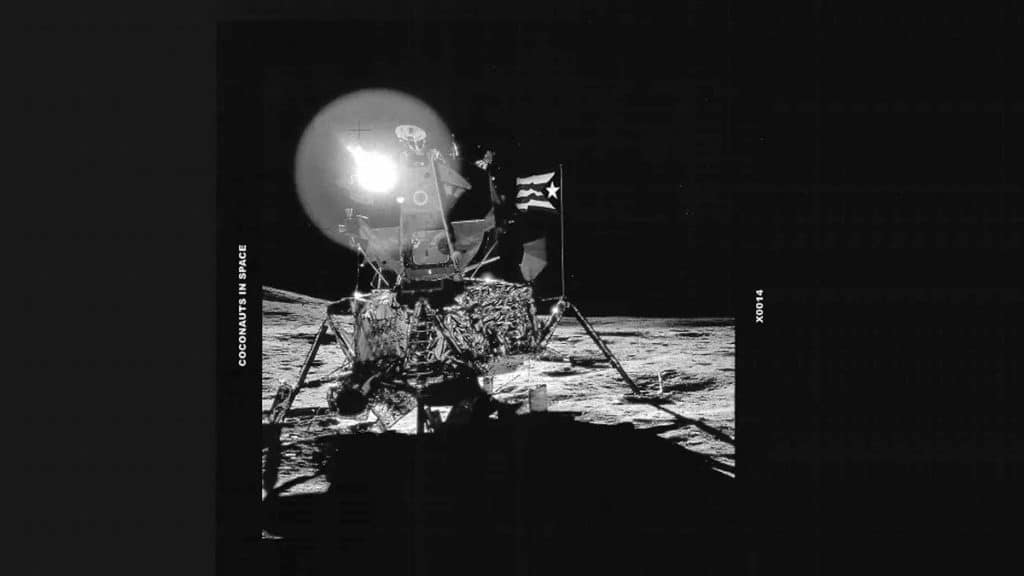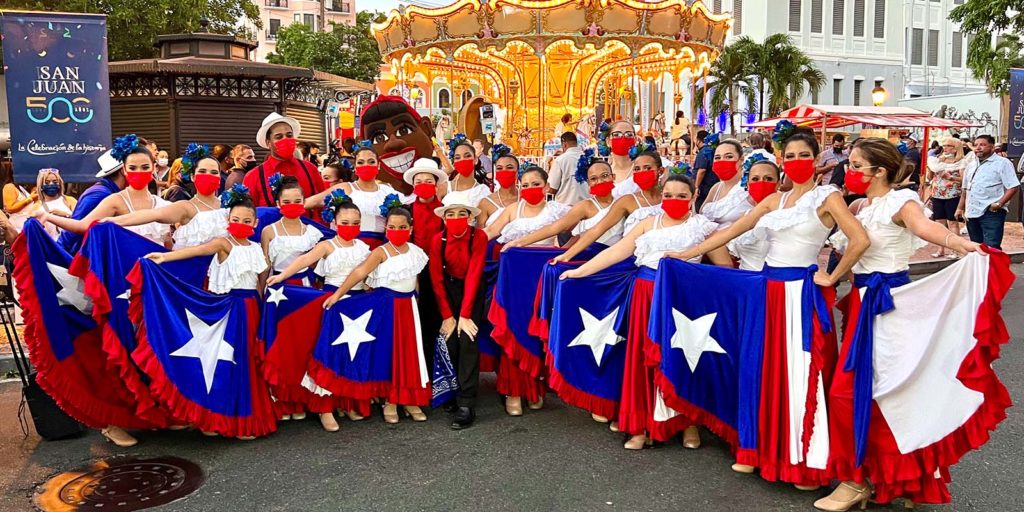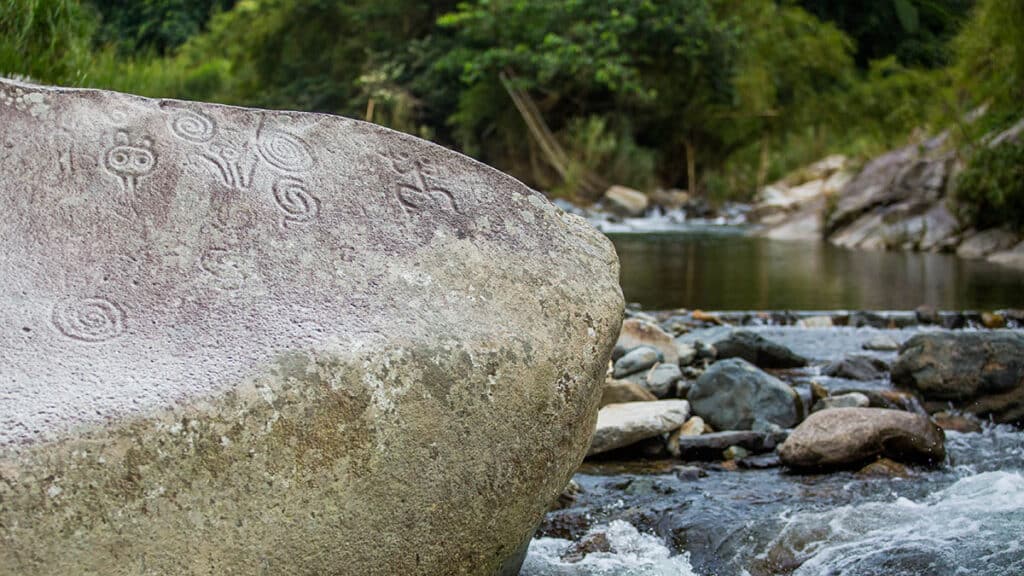Puerto Rican Heritage Month is November. It is an official New York City celebration proclaimed by New York Mayor Rudy Giuliani in 1998. Comité Noviembre made it happen.
Puerto Rican Heritage Month

The celebration acknowledges Puerto Rican contributions to the culture and prosperity of New York City. We are one of the communities that defines New York, and opened doors for all Latins to follow.
There are more of us in the mainland Diaspora, than there are on the island. We are so diverse that we have many different world views, but no matter where in the world we are, we are all still Puerto Rican.
You can take the Puerto Rican out of the island, but you can’t take the island out of the Puerto Rican.
Yo Soy Boricua, Pa’ Que Tú lo Sepas
This is a great song and anywhere in the world, if you give the call “Yo soy Boricua,” Puerto Ricans will respond, “Pa que tú lo sepas.” It’s a great feeling of solidarity that will make your hair stand on end. You can always find fellow Puerto Ricans in a crowd.
Soy Boricua
Joel Bosh AKA Taino was channeling FANIA All-Star Bobby Valentin’s 1972 hit “Soy Boricua” which has that Antillean blues feeling. If you play Bobby’s compositions on guitar, you will notice that he made the most beautiful music with the simplest fingerings. That’s Puerto Rican!
A Mi Me Gusta Mi Pueblo
As island Puerto Ricans (corazón Boricua), this is how we see Puerto Rico. El Gran Combo de Puerto Rico was formed out of Rafael Cortijo’s band, Cortijo y su Combo, featuring Ismael Rivera. Cortijo and Rivera are the musicians who put bomba rhythm into la Salsa. Salsa was created by musicians from many Latin countries, but is mostly Puerto Rican. You can hear it.
This video makes us very homesick. We have lifetime memories from many of those places. Thanks to the Diaz family that adopted us.
Adál Was Here

Adál Maldonado, the great Puerto Rican surrealist photographer, was born in Utuado, Puerto Rico, on November 1, 1948. A member of the Nuyorican Movement, Adál photographed the Latin stars of the 1980s, opened the first Latin photo gallery in New York City, taught legendary photographer Robert Mapplethorpe how to develop and print photos, and planted the first Puerto Rican flag on the moon.
He is one of the padrinos (godfathers) of New York Latin Culture Magazine. Adál taught me to laugh at everything, provided my Puerto Rican passport, and pushed me into Puerto Rico’s bomba culture in the most mystical way. Adál made my Puerto Rico surreal. Editor “Kíko” Keith. #AdalWasHere mapr.org 🇵🇷
La Perla
We had many great experiences in La Perla. Proyecto Kokobalé leads a wonderful bomba and cocóbale, the Puerto Rican martial art dance, for kids on Friday afternoons that turns into a bomba party at night. Facebook
But you must only enter La Perla with respect. People live there. Before taking a picture, always ask permission. La Perla is cool, but respect opens every door, and keeps you safe.
Despacito
La Perla has changed a lot. Pasito Pasito Waterfront is a great bar next to the steps Zuleyka walked down in La Perla. Follow them for news of live music, DJ sets, and such on Instagram. @pasitoapasitolp
La Garita is a chinchorro (Puerto Rican community restaurant/bar) that overlooks La Perla. It has million dollar views. Facebook @LaGaritaYAZ
November is an Important Month for Puerto Ricans
November is National Native American Heritage Month. We are mixed Indigenous, European and African, but cherish our Indigenous Taíno heritage. The tribe was assimilated by Spanish colonizers. They said we died out, but actually we married in. The Spanish avoided responsibility by no longer counting us in their census, but we are still here.
The Taíno spirit lives on in the hearts of Puerto Ricans. Taíno ways are still recognizable in the way we live on the island. There is a direct line from a traditional Taíno areíto gathering to bomba, plena and even reggaeton gatherings.

November 19 is the Feast of the Virgin of Providence, the patron saint of Puerto Rico. It’s also Discovery of Puerto Rico Day, but few people celebrate that any more because Columbus was an evil man who unleashed an Indigenous genocide in the Americas, helped start the Spanish practice of human slavery in the Americas.
We Have Bomba in Our Hearts
We Have Plena in Our Hearts
Tintorera del Mar
A classic old plena
Tintorera del Mar
Tintorera del Mar
Que se ha comido un americano”
A tintorera is a female tiger shark. In the song, the shark ate an American. That’s what happened to me on the beach at Isla Verde in Carolina on my first week in Puerto Rico. On my last day in New York, Cubans opened my head to the orishas. So I asked Yemayá, the Yoruba orisha of the sea, if I should stay there and ran to the ocean to receive her answer. The second I touched the water, I went down. In my mind’s eye, a shark bit my leg off. I crawled out of the water like a frog and some guys helped me off the beach. I couldn’t walk. I didn’t know it then, but had torn my Achilles tendon. I couldn’t walk for a year.
I interpreted Yemayá’s answer as no, so I moved to San Juan, where I met the woman whose family adopted me and showed me Puerto Rican family life, which is what being Puerto Rican is all about anyway. So I misinterpreted Yemayá’s answer. Her answer was yes. She made me stay in Puerto Rico to receive the blessings of the island. And I did. I lived on Calle Ismael Rivera. I met my godfather Adál Maldonado. He pushed me into Afro-Puerto Rican culture. I learned about spiritual traditions from the great Puerto Rican writer Mayra Santos-Febres. I first saw bomba at the batey Ayala in Loíza Aldea. I spent time with the Cepeda family of Santurce, the first family of bomba in Villa Palmeras. I survived the pandemic in the bomba crew of Héctor “Coco” Barez, Calle 13’s percussionist. He made me a bomba drummer. I studied salsa dancing at Llorens, a place where few tourists, and even most locals won’t go. I met a real sicario who is another of my godfathers. He always stood for me, and still does. I partied in La Perla. Never, ever had a problem. All I found in Puerto Rico was family love.
At La Goyco community center in Santurce, former Plena Libre singer Emanuel Santana Rivera taught me to play the pandereta and sing “Tintorera del Mar.” This is my verse. @la_goyco
Soy comida del Mar
“Kíko” Keith’s Verse
Soy comida del Mar
Soy comida del Mar
Pa’ que, yo soy americano”
I wasn’t born Puerto Rican, but I and New York Latin Culture Magazine have a Puerto Rican heart. In the Dominican Republic, my street friends call me “Bori.”
Mi Gente, Ustedes
“La-la, la-la, la-la-la Que canta mi gente.” That’s the call to Allah or Eleguá or just a vocalization, depending on your point of view.
Puerto Ricans Have the World’s Longest Christmas Celebration
The Puerto Rican Christmas holiday season, the world’s longest, gets going on Thanksgiving.
Mama pong el arbolito
El Gran Combo de Puerto
Porque llevo Navidad…
Puerto RRRICOOO!
El Coqui
By the way, if you’re Puerto Rican, say my name. “Kíko” Keith. What does that remind you of? Only Puerto Ricans get the joke.

Our national icon, the Taíno coqui was carved into Piedra Escrita (Written Stone) in Jayuya, the Taíno heart of the island. The Festival Nacional Indígena de de Jayuya is great festival celebrating our Taíno roots. The tribe was absorbed, although there is a renaissance group in Bayamón, San Juan. Regardless Taíno spirit lives on in the way Puerto Ricans live life to the fullest.
En Mi Viejo San Juan
Me voy
José Feliciano
Pero un día volveré
A buscar mi querer
A soñar otra vez
En mi viejo San Juan”
El Jolgorio (WEPA, WEPA, WEPA)
Oh, and “bien por la maceta” has a second meaning that will make you laugh. I could continue this story forever, but will end with…
WEPA, WEPA, WEPA, vamos a gozar!”
🇵🇷
